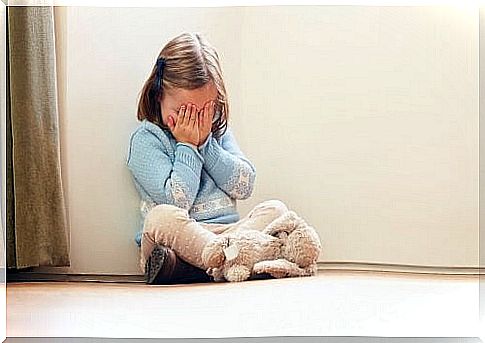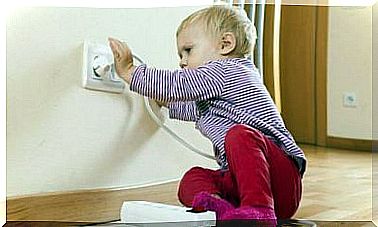Stop Having Tantrums: What Do You Have To Say To Your Child?

Having tantrums is the way that the child – still immature – has to communicate that “what I feel is stronger than me and I cannot control it”. It is normal for you to have these strong angry reactions, because you can not express in words that intense emotion that dominates you.
Generally, having tantrums manifests itself strongly around the age of two. It is important to treat these crises appropriately to contribute to the healthy emotional development of the child.
There are different types of tantrums. Sometimes having tantrums is a tool to manipulate and get what the child wants. Other times there are deeper emotional roots. In either case, the key is not to respond to a child’s tantrum with an adult tantrum. In addition, you have to remain calm and act with control of your own emotions.
The mother or father should talk to the child about what happened, but not at the time of the tantrum. It is best to do it once it has calmed down. During the crisis, the child does not understand reasons. At that time the specialists suggest restraining the child, hugging him. Say soft, loving words to him and wait. When the tantrum is over, it will be time to speak up.

What to say to the child so that he stops having tantrums?
As we can see, having tantrums is normal in a period of childhood. Therefore, the most important thing is that when you talk with your child after the episode of tantrum, you help him to reflect and mature.
- It should be borne in mind that, when speaking with the child, you must do so in a concrete, clear and direct way. It is important that you make sure that the child understands what you are saying.
- The looks, gestures, hugs, smiles or tones of the voice that convey affection are essential in communication. This does not imply that your tantrum is approved. Although you will be made aware that your crisis is inappropriate, you need to feel the affection of your parents.
- At the moment of the tantrum, the adult in charge of the child should assess the situation. If he is in a place or position where he can injure himself, the first thing to do is get him to a more appropriate place. In those minutes it is best not to say anything. One strategy is to get the child to change the focus of his attention. In this way, he will stop paying attention to the stimulus that causes the tantrum and will concentrate on another, led by the adult.
Positive reinforcements
- The conversation with the child should not be approached as a reprimand. It is important to remember that having tantrums is an involuntary and uncontrollable act for him. Words like “I’m going to help you get over this” or “Stay calm, I’m here to help you”, spoken warmly, will help the child to be calm and safe again.
- After the episode of the tantrum, it is important to show him the joy that he has regained control. It is time to explain what would have been the best way to act. “When you feel like this, try to talk to me, to explain what is wrong with you. We will solve it together ”,“ if mom says “no”, you can ask why. There is always a reason that has to do with your well-being ”, or similar reasons.

- When speaking with the child, the person should not be judged but the act performed. The idea of ”you are a bad boy” should not be transmitted to him but rather of “what you did was wrong”. This distinction is essential at the time of dialogue. Children will only share their concerns if they don’t feel judged.
- The child has a concrete thought. In dialogues with him, vague and generalizing terms must be avoided. For example, it is common to say to a child: “be good.” However, this expression can refer to so many behaviors that the child often cannot assimilate it. Other options such as “stay still”, “don’t yell anymore” or “stop touching everything you see” are much more concrete and understandable messages.
- Talking to a child involves listening to them, caring for them, and trying to understand their motives. It will be a good time to make him think, reconsider and understand that his behavior was not right. Whatever their age, their ability to think and understand should not be underestimated.
The tantrums will go away as the child grows. They may resurface with different manifestations in adolescence. But the general suggestion is the same: calm, the dialogue that implies attentive listening, the adaptation of the messages to the characteristics of the child and, fundamentally, the manifestation of love that will make the child feel safe and cared for.









